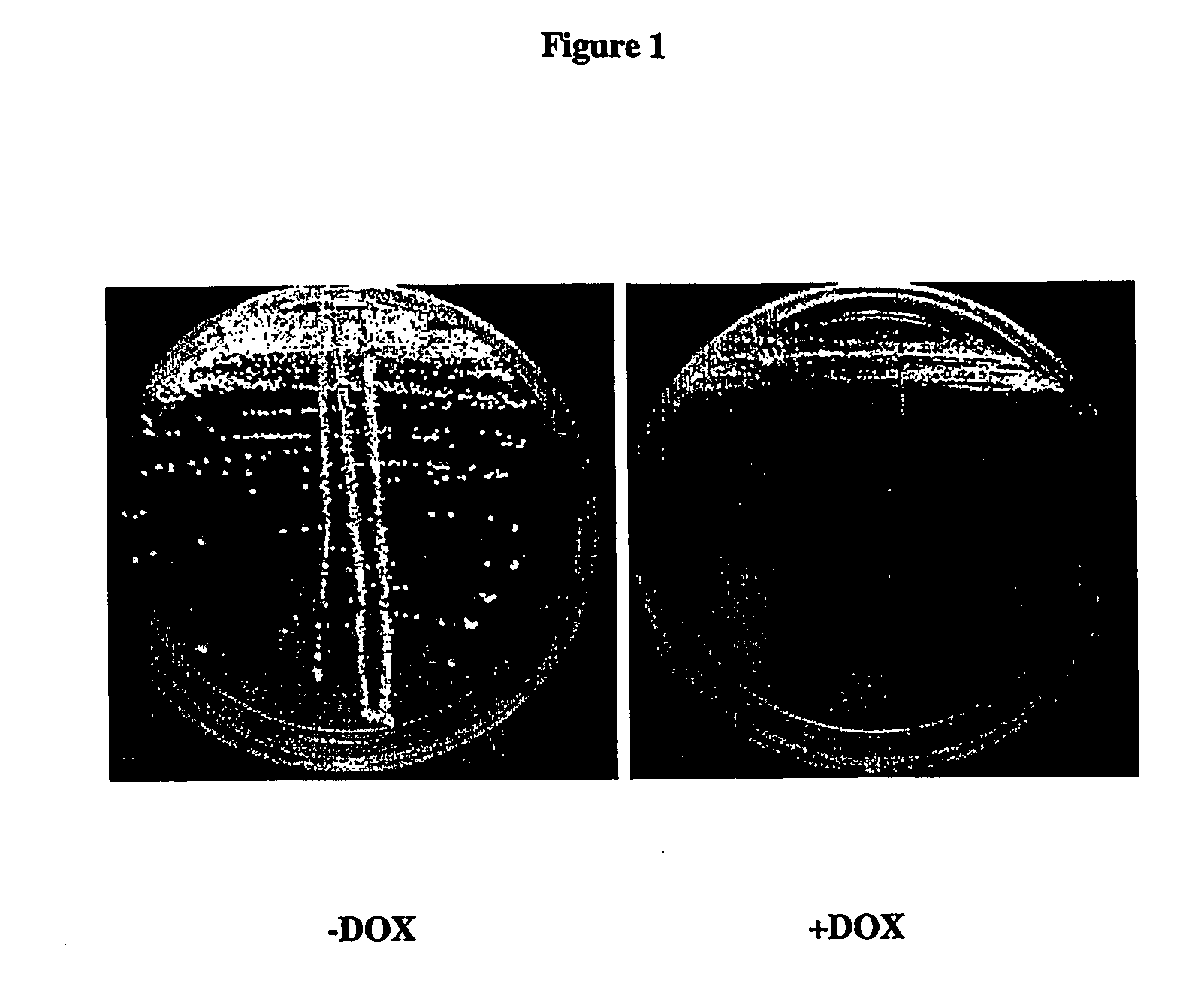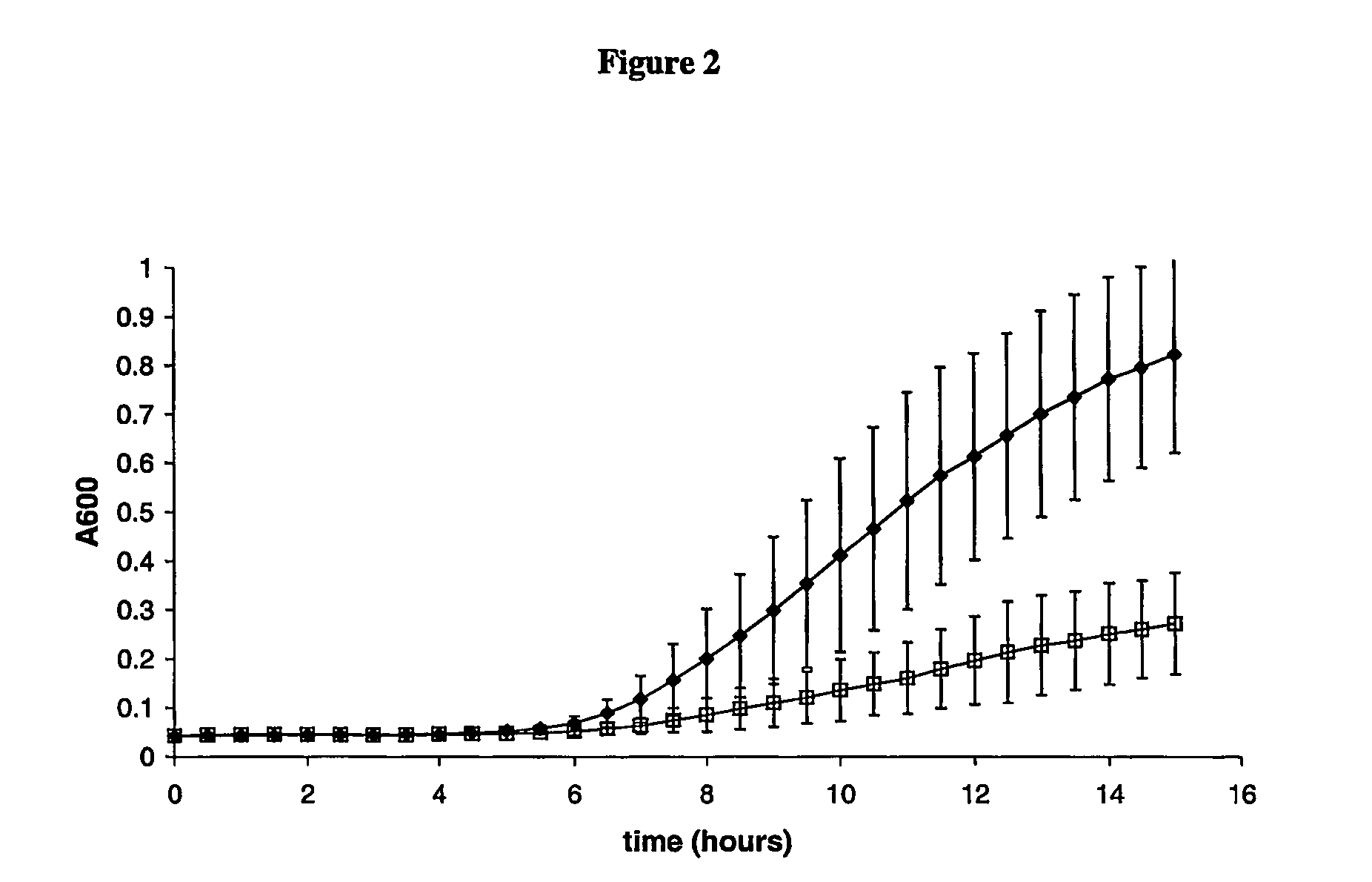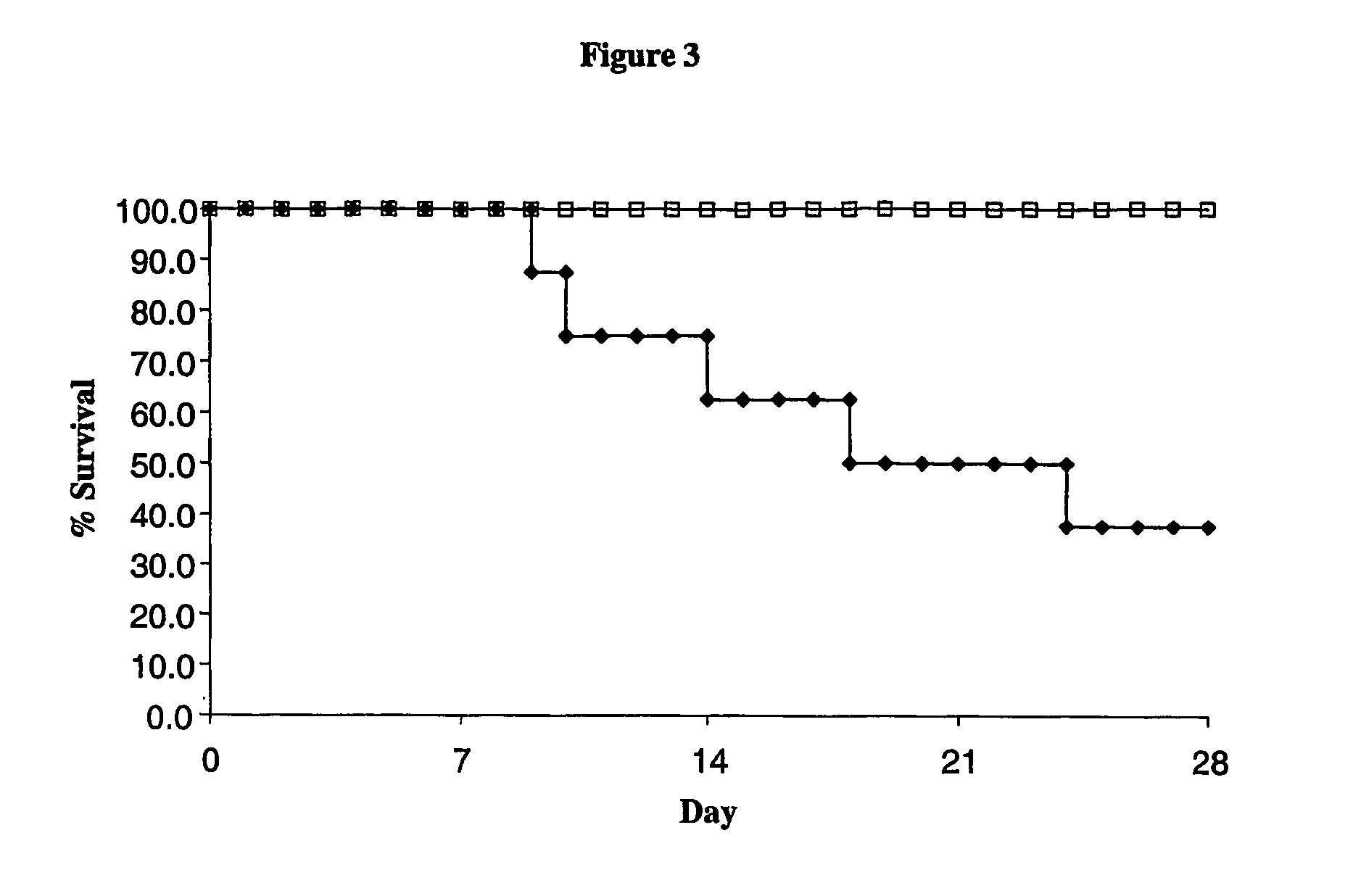Mss4 as an antifungal target
a technology of phosphotidylinositol and antifungal target, which is applied in the field of new antifungal target, phosphotidylinositol4phosphate 5kinase, can solve the problems of increasing financial and logistic burden on the medical care system and its providers, misleading and restrictive, and limited treatment options for these infections, so as to facilitate drug discovery and specific inhibition of fungal phosphorylation activity
- Summary
- Abstract
- Description
- Claims
- Application Information
AI Technical Summary
Benefits of technology
Problems solved by technology
Method used
Image
Examples
example 1
Expression of MSS4
[0089] The MSS4 ORF was cloned into pGex-6P-1 (Pharmacia Biotech) to enable expression as a 5′ GST fusion protein. Host E. coli used were Tuner(DE3)pLysS (Novagen). E. coli harbouring the expression plasmid were grown at 37° C. to mid log phase (OD600=0.6) then cooled to 17° C. and induced with IPTG (0.3 mM) for approximately 4 h.
example 2
Purification of MSS4
[0090]E. coli cells from 5L of culture were harvested by centrifugation at 6000×g for 10 min. The cell pellets were frozen on −80° C., thawed and resuspended in 150 ml of buffer A (20 mM Hepes (pH7.4), 5 mM DTT, 140 mM NaCl, 1 mM EDTA, 10% (v / v) glycerol, 0.02% (w / v) sodium azide, and a protease inhibitor cocktail consisting of 1 mM benzamidine, 1 mg.ml-−1 each of pepstatin, antipain and leupeptin, 0.2 mM PMSF, Complete (Roche) and general protease inhibitor cocktail (Sigma).
[0091] The extract was sonicated in 3×10 s bursts to reduce viscosity. Triton X-100 was added to 1% followed by centrifugation at 75 000×g for 10 min. The supernatant was batch loaded onto 5 ml glutathione Sepharose (Amersham Biosciences) at 4° C. The resin was extensively batch washed with phosphate buffer containing 0.5M NaCl then with buffer B (20 mM Hepes (pH 7.4), 1 mM DTT, 1 mM EDTA, 100 mM NaCl, 10% glycerol, 0.02% sodium azide). The resin was then packed into a disposable PD-10 colu...
example 3
MSS4 Assay
[0093] The 1-phosphotidylinositol-4-phosphate 5-kinase assay is based on the method of Desrivieres S, et al, (1998, J. Biol. Chem., 273(25) 15787-93). Dried lipids are sonicated into 174, μl of assay buffer (25 mM HEPES, pH 7.4, at 25° C., 2 mM MgCl, 0.2 mM EDTA, 1 mM EGTA, 5 mM β-glycerophosphate, 1 mM dithiothreitol, and 120 mM NaCl) to give a final concentration in the assay of 100 mM phosphatidylinositol-4-phosphate and 300 mM phosphatidylserine. Purified MSS4 is added to the assay (4 μl), and the reactions are started by the addition of 20 μl of assay buffer containing 0.04 MBq [λ33P]-ATP and 100 μM ATP. Kinase activities are tested at 30° C. for 30 min. The reactions are stopped by the addition of 750 μl of chloroform: methanol (1:2). The lipids are then extracted by the addition of 200 μl of 2.4M HCl and 900 μl chloroform. The lower phase is washed twice with 1 ml of upper phase (HCl:chloroform:methanol (47:3:48)). The incorporated λ33P is then measured by transfer...
PUM
| Property | Measurement | Unit |
|---|---|---|
| pH | aaaaa | aaaaa |
| mean survival time | aaaaa | aaaaa |
| concentrations | aaaaa | aaaaa |
Abstract
Description
Claims
Application Information
 Login to View More
Login to View More - R&D
- Intellectual Property
- Life Sciences
- Materials
- Tech Scout
- Unparalleled Data Quality
- Higher Quality Content
- 60% Fewer Hallucinations
Browse by: Latest US Patents, China's latest patents, Technical Efficacy Thesaurus, Application Domain, Technology Topic, Popular Technical Reports.
© 2025 PatSnap. All rights reserved.Legal|Privacy policy|Modern Slavery Act Transparency Statement|Sitemap|About US| Contact US: help@patsnap.com



